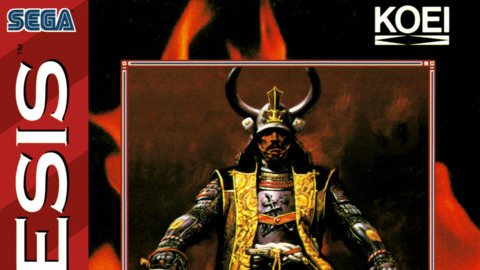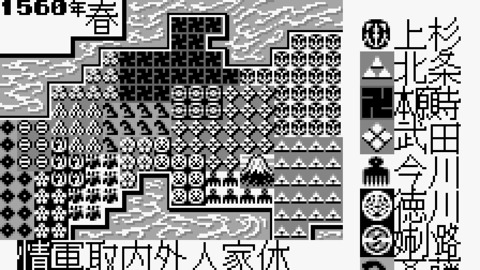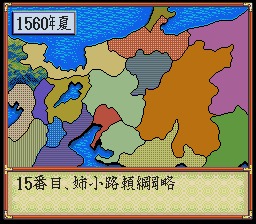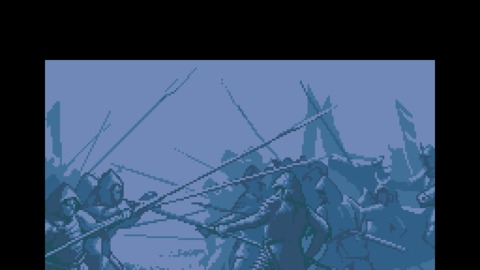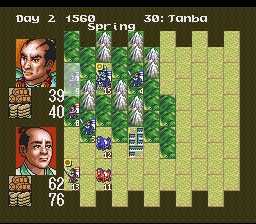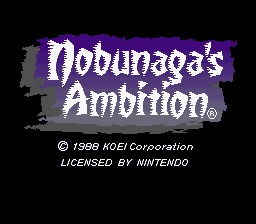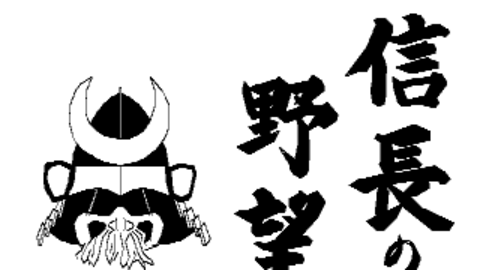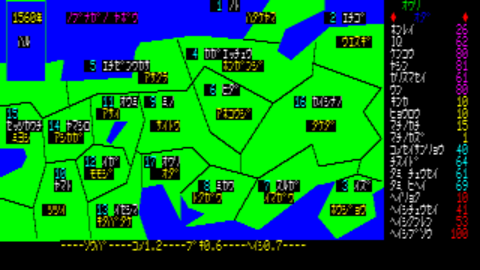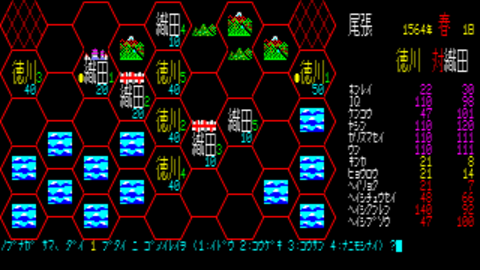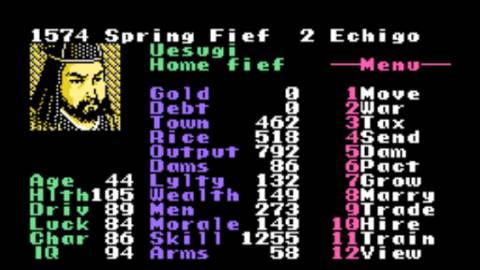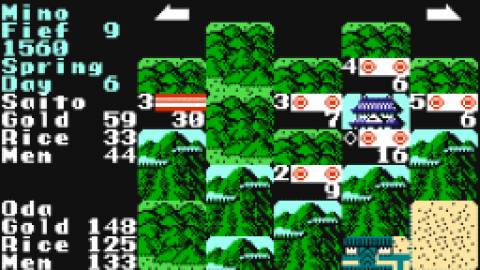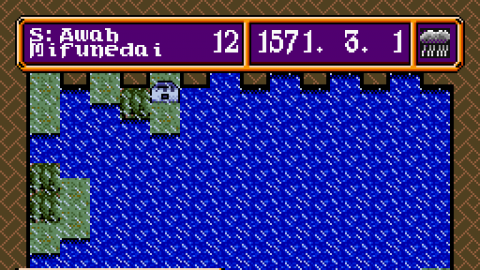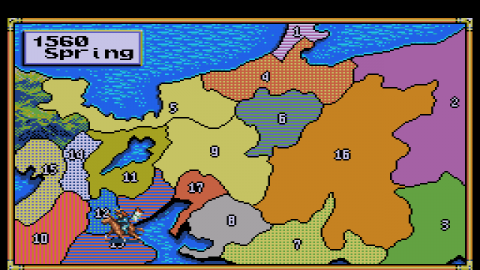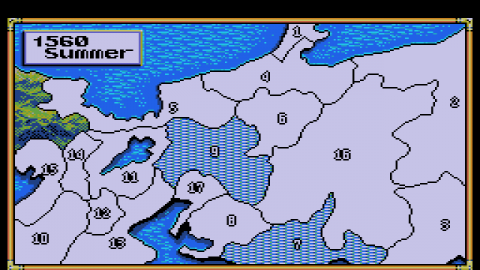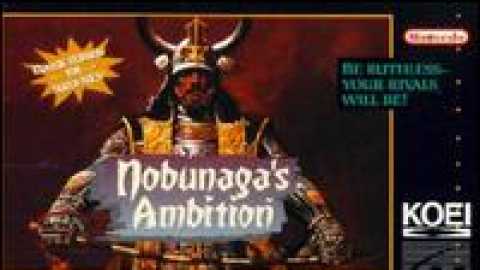Overview
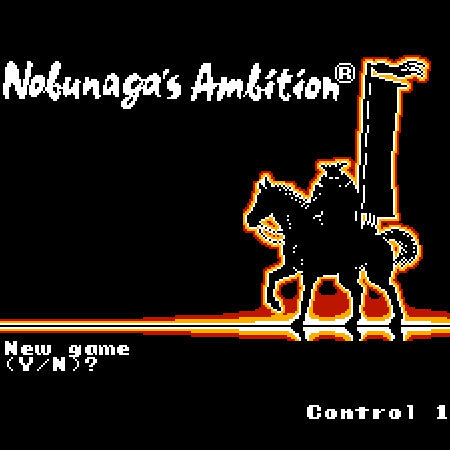
Nobunaga's Ambition is the second in a long-running series of historical strategy games set against Japan's Warring States era. Its title refers to Nobunaga Oda, one of the most powerful warlords of the era, who was on a path to unifying Japan under his rule until his assassination in 1582. In the game, the player attempts to do what Nobunaga could not, and unite all of Japan.
The game was released on multiple home computers, similar to its predecessor, but was also ported to various consoles as well. It was also the first game in the series to be localized into English. The Japanese subtitle, Zenkokuban, means "Country-Wide Edition".
Story
As the title suggests, the player is tasked with achieving the ultimate goal of warlord Nobunaga Oda; the conquest and unification of Japan. Selecting Nobunaga Oda is optional, however, as the player is also able to choose from a variety of other regional daimyos of the era.
Gameplay

The player may choose from four campaign scenarios including:
- Battle for the East (beginning in 1560)
- Daimyo Power Struggles (1560)
- Ambition Untamed (1571)
- Road Towards Unification (1582)
In each scenario, the player must first select a daimyo to play as, and also determine the daimyo's statistics, which are defined by Health, Ambition, Luck, Charm, and IQ. Each statistic is ranked on a hundred-point scale. The progression of time is structured in a turn-based manner. When in the map view, the passing of a turn corresponds to a change in season, and each turn during battle corresponds to the passing of a single day. As time passes, daimyos and officers age and will eventually die of natural causes. As the game progresses, the player must allocate resources to raise a capable military force, encourage a productive economy to support both military and civilian expansion, and support the peasants in order to sustain their respect and loyalty.
Battles take place in maps that are divided into 5x10 grids with terrain types such as hills, mountains, villages, rivers, plains, and castles. The player may achieve victory in battle through numerous means, among which include forcing the enemy to retreat, destroying the enemy command unit, outlasting an invading force, or prolonging battle until the opposing force has exhausted its supplies.
Outside of battle, the player can make numerous decisions that affect domestic and diplomatic policy as well as military decisions that affect troop strength and allocation. Such actions include transporting soldiers, rice and gold between fiefs, which can be used to strengthen regions at the expense of others. Taxes may be raised or lowered to adjust the income level and the land may be cultivated to boost productivity, though raising taxes or choosing to cultivate will also lead to a decrease in loyalty among the peasants. Expanding a town allows for greater tax income, as well, but also leads to a reduction in loyalty. If loyalty drops too low, the peasants may rise up in rebellion.
To ward against floods, the player can adjust the level of flood control, though the higher the control, the lower the productivity. It is also possible to recruit soldiers or ninja for the military, train the troops, and provide rice to the peasants and troops as a means to raise morale. On the diplomatic side, in addition to going to war, it is also possible to encourage good relations between rival factions by ratifying a non-aggression pact or arranging a marriage. Alternatively, the player can also send spies to keep tabs on rivals or work to win over a rival's own peasants. Merchants can be approached in order to buy weapons, buy or sell rice, or borrow money. It is also possible for the player character daimyo to fall ill, and so if necessary, the player may need to spend time to recuperate.
If a player does not wish to control every aspect of governing, it is also possible to allow the computer AI to govern aspects of selected fiefs.
Reception
The Nobunaga's Ambition series has garnered several awards over the years. According to Koei's website, various releases in the series have won Log-In magazine's "BHS Prize", the "Minister of Post & Telecommunications Prize", Nikkei BP's 12th, 13th and 14th annual "Best PC Software" awards, and CD-ROM Fan's "Fan of the Year 2001 Grand Prize".
In North America, where it was released almost five years after its Japanese release, critical reception was also positive. Evan Brooks of Computer Gaming World enjoyed the game greatly, and in the September 1988 issue rated it as "Highly Recommended", with a score of 4/5 stars. He introduced the game as "a detailed economic / diplomatic / political / military simulation of the unification of Japan in the Sixteenth Century." He praised the graphics for being "among the best that this reviewer has ever seen for the IBM" and the 5x10 hex map battles, and noted that it used RPG elements, including assigning various statistics and attributes to a selected persona, a time system where each turn represents a year, as the daimyo ages and eventually dies of old age, and a multiplayer option. In his review, he noted, "This reviewer was glued to his computer for 13 hours, stopping at 3:00 am. Not since Gunship has this occurred. The end result is that the computer gamer must have, at least, one Koei game in his inventory!" Compute! similarly praised the IBM PC version, calling it "one of the best strategic war games ever designed for a personal computer" and citing the game play, user interface, and documentation.

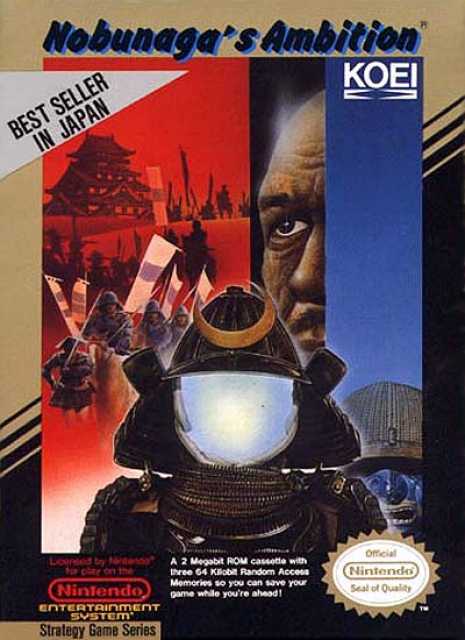
 Amiga
Amiga Wii Shop
Wii Shop PC
PC Wii U
Wii U
